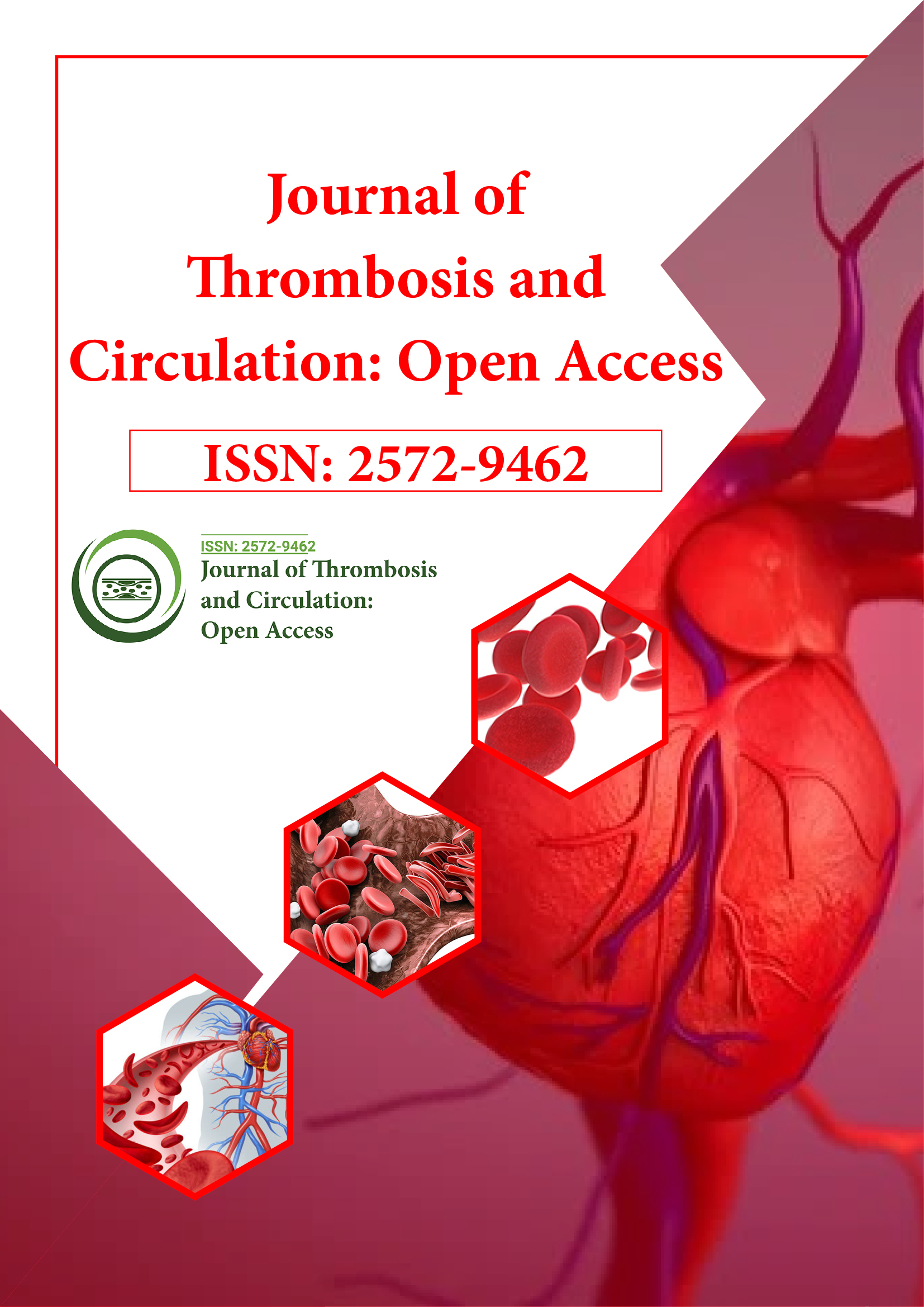Indexed In
- RefSeek
- Hamdard University
- EBSCO A-Z
- Publons
- Google Scholar
Useful Links
Share This Page
Journal Flyer

Open Access Journals
- Agri and Aquaculture
- Biochemistry
- Bioinformatics & Systems Biology
- Business & Management
- Chemistry
- Clinical Sciences
- Engineering
- Food & Nutrition
- General Science
- Genetics & Molecular Biology
- Immunology & Microbiology
- Medical Sciences
- Neuroscience & Psychology
- Nursing & Health Care
- Pharmaceutical Sciences
Perspective - (2023) Volume 9, Issue 4
Managing Deep Vein Thrombosis Complexity: Inferior Venacava Malformations and Treatment Considerations
Daida Tamagushi*Received: 19-Jun-2023, Manuscript No. JTCOA-23-22267; Editor assigned: 21-Jun-2023, Pre QC No. JTCOA-23-22267 (PQ); Reviewed: 06-Jul-2023, QC No. JTCOA-23-22267; Revised: 13-Jul-2023, Manuscript No. JTCOA-23-22267 (R); Published: 21-Jul-2023, DOI: 10.35248/2572-9462.23.9.232
Description
Deep vein thrombosis (DVT) is a serious condition characterized by the formation of blood clots in the deep veins, typically in the legs. It is a well-known and potentially life-threatening condition that can lead to pulmonary embolism if left untreated. While DVT is often associated with risk factors such as prolonged immobility, surgery, or certain medical conditions, there is a lesser-known but significant association between DVT and Inferior Vena Cava (IVC) malformations. The inferior vena cava is the largest vein in the human body, responsible for carrying deoxygenated blood from the lower body back to the heart. In some individuals, however, the IVC may have structural abnormalities or malformations that can disrupt the normal blood flow and predispose them to DVT. These malformations can be present at birth (congenital) or acquired later in life. Congenital malformations of the IVC are typically a result of abnormal embryonic development. One of the most common IVC malformations associated with DVT is the absence or partial absence of the IVC, known as agenesis or hypoplasia. In these cases, blood from the lower extremities is rerouted through collateral veins, which can lead to slower blood flow and increased risk of clot formation. Another type of IVC malformation is the presence of an IVC with a filter-like structure known as a membranous web. This web can act as a mechanical barrier, impeding blood flow and increasing the risk of clot formation. Other less common malformations include duplication of the IVC or the presence of an IVC with an abnormal shape or position.
Diagnosing DVT associated with IVC malformations can be challenging, as the symptoms may mimic those of regular DVT. Patients may present with leg pain, swelling, warmth, and discoloration. However, a careful evaluation of the patient's medical history and imaging studies can help identify the presence of IVC malformations. Imaging modalities such as ultrasound, Computed Tomography (CT) scan, Magnetic Resonance Imaging (MRI), or venography can be used to visualize the IVC and identify any abnormalities. Treatment options for DVT associated with IVC malformations are similar to those for regular DVT. The primary goal is to prevent the clot from progressing and to reduce the risk of complications, such as pulmonary embolism. Anticoagulant medications, such as heparin and warfarin, are commonly prescribed to prevent further clotting and allow the body's natural processes to dissolve the existing clot. In some cases, endovascular procedures may be performed to address the underlying IVC malformation. These procedures can involve placing stents or filters to improve blood flow or prevent clots from traveling to the lungs. It is important to note that not all individuals with IVC malformations will develop DVT, and not all cases of DVT are associated with IVC malformations. However, understanding the association between the two can aid in the accurate diagnosis and appropriate management of this subset of patients. Additionally, identifying IVC malformations in patients presenting with recurrent or unexplained DVTs can help prevent future episodes and guide treatment decisions. Deep vein thrombosis associated with inferior vena cava malformations is a noteworthy but uncommon condition that can contribute to the development of blood clots in the deep veins. Congenital or acquired malformations of the IVC can disrupt blood flow, increasing the risk of clot formation. Early diagnosis and appropriate management are significant in preventing complications and ensuring optimal patient outcomes. Further research and awareness are needed to better understand this condition and improve its diagnosis and treatment.
Citation: Tamagushi D (2023) Managing Deep Vein Thrombosis Complexity: Inferior Venacava Malformations and Treatment Considerations. J Thrombo Cir.9:232.
Copyright: © 2023 Tamagushi D. This is an open-access article distributed under the terms of the Creative Commons Attribution License, which permits unrestricted use, distribution, and reproduction in any medium, provided the original author and source are credited.
